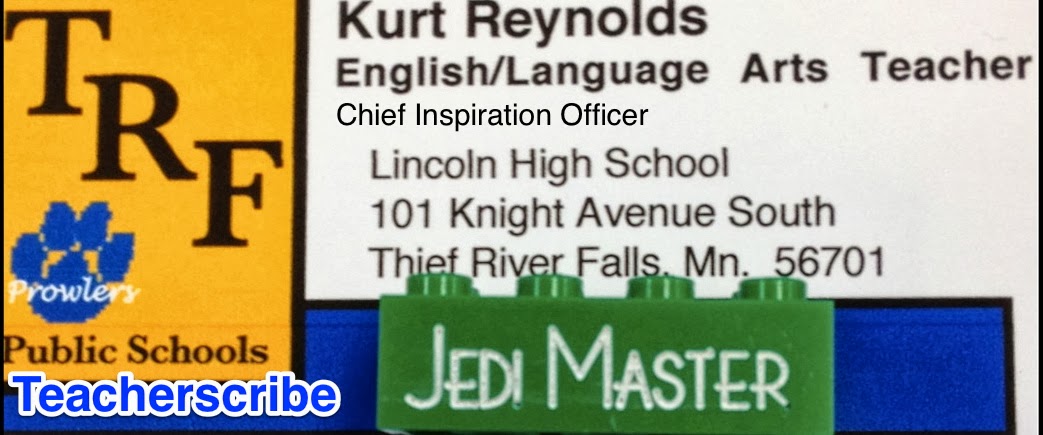Teacherscribe’s Teaching Tip #11
What lesson or assignment could you sell tickets for?
I think my introduction to our film analysis paper would be my answer to this (in)famous question posed by Dave Burgess in Teach Like a Pirate.
Here is how it goes –
Learning Target – students will be able to analyze a key film scene for one of the following film techniques (music, lighting, power of suggestion, dialogue, suspense, and symbolism).
I use Storify to share several key scenes with my College Comp students. On that site I have numerous key scenes from films.
We watch a couple of famous scenes together (such as how the Coen brothers create suspense in several scenes from No Country for Old Men or how music is used to manipulate the viewers in a key scene from Pixar’s UP). Here, I try to have students do as much of the talking and discovering as possible. For example – how do the Coen brothers make Anton Chigurh so terrifying? What about his attire? What about his dialogue? What about his actions? How do they show us images and details that many other directors don’t? What is the purpose of those scenes? Again, I try to shut up and just ask a few guiding questions.
Then I will assign students specific scenes from the Storify site to analyze in a short paragraph that they then share with me via Drive before they leave.
Evidence of Learning – students will share their paragraphs with me as they leave. Then I will go over them to check for understanding.
Then I will open the next class period by assigning students to different scenes. I will have them analyze the scene. Then I pair them up with the student who the day before analyzed that scene. They will compare their takes on the scenes.
So if Stacy analyzed the conclusion of Donnie Brosco and Kathryn analyzed Samuel L. Jackson’s death in Deep Blue Sea, I will make Stacy analyze the Deep Blue Sea scene while Kathryn will analyze the conclusion of Donnie Brosco. Then students will share their analysis and see what they have in common and why. Verbally, students will share their results.
I know this worked well, for when I first tried it, Mr. Zutz was observing me. He paid me a great compliment when he said, “I had trouble evaluating you because I got caught up watching the videos and analyzing them as part of the assignment instead of evaluating the effect on the students.” I’ll take that as a compliment!


No comments:
Post a Comment